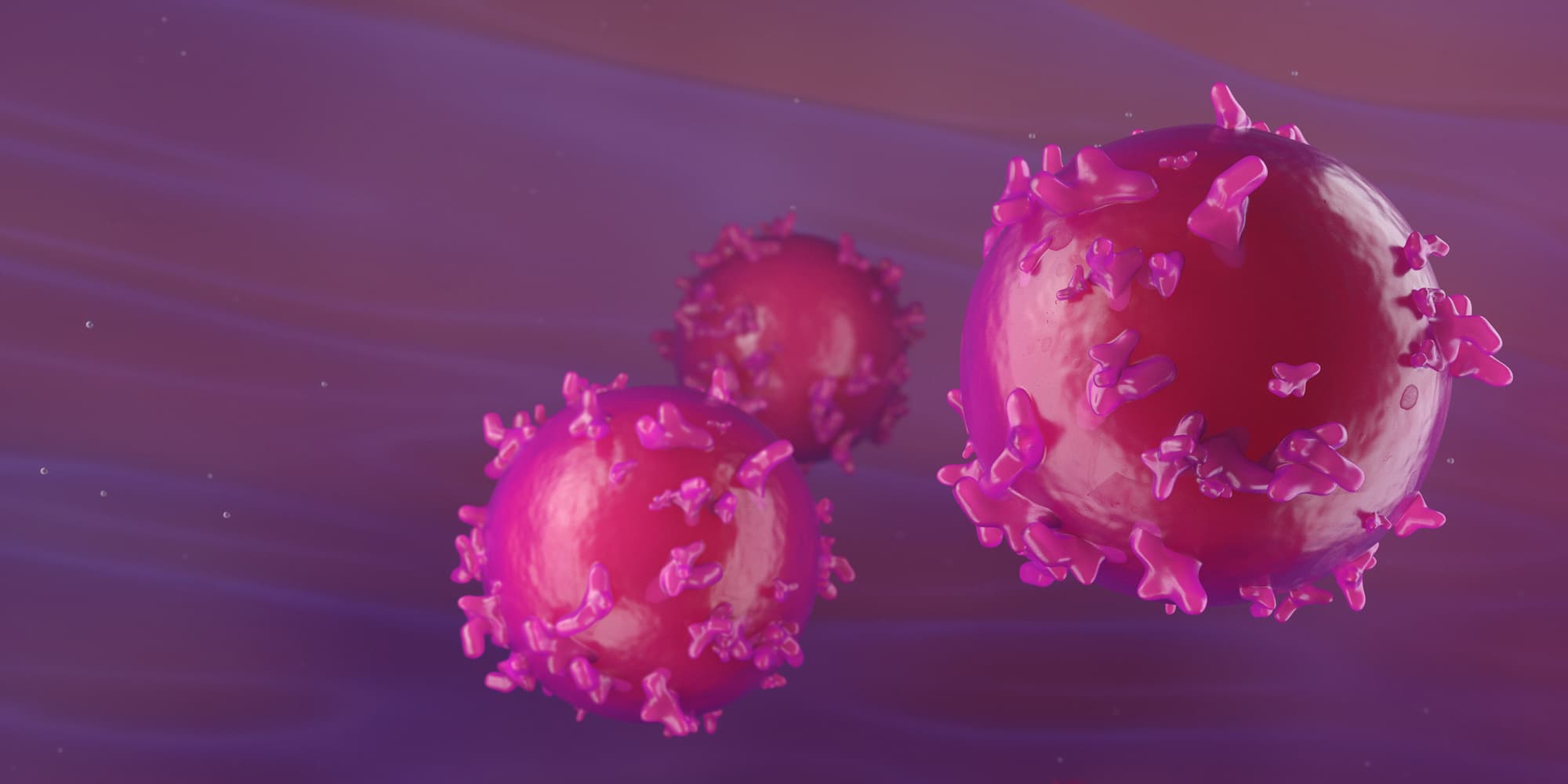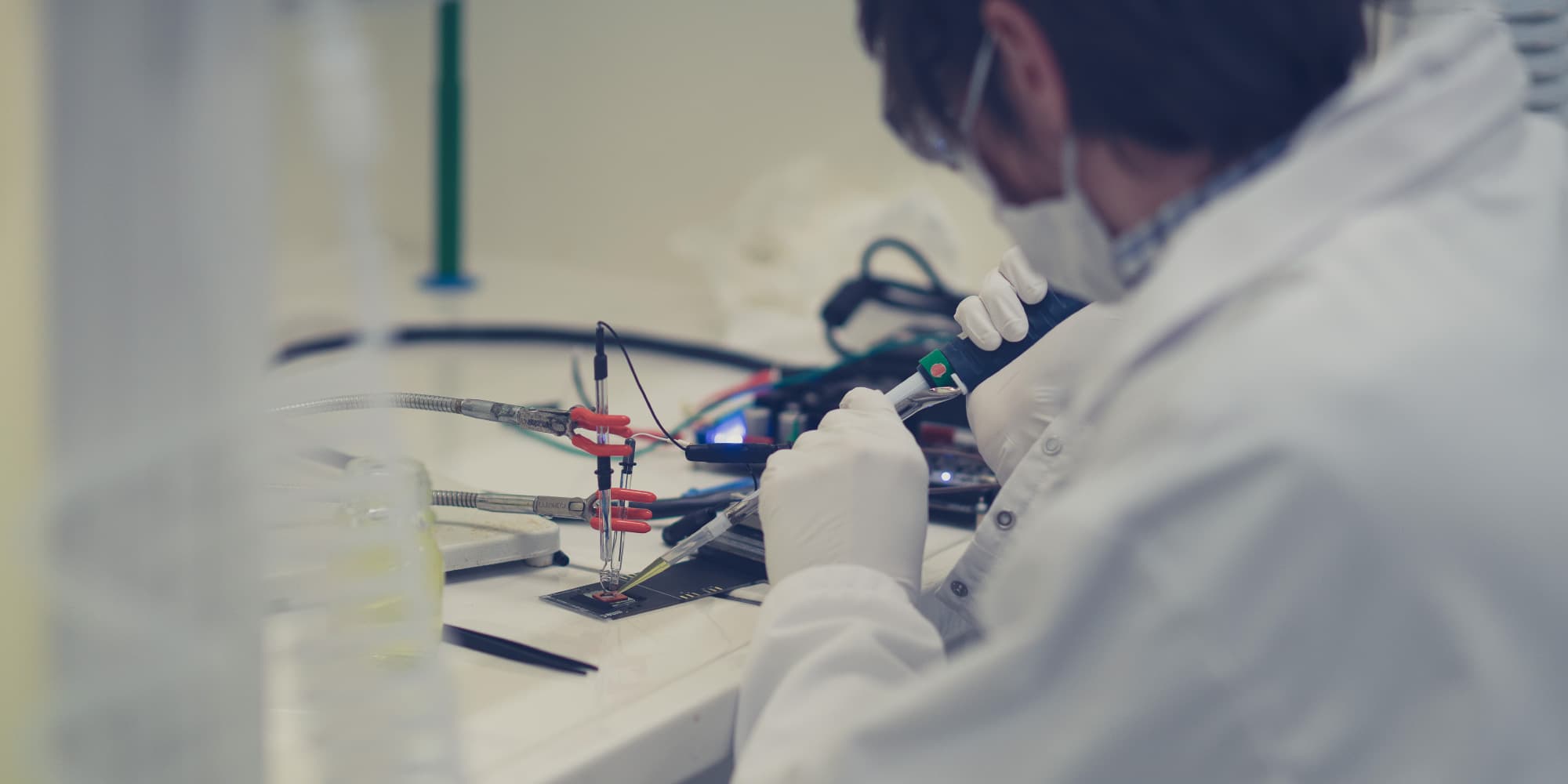
Solid-state nanopores
A mature solid-state nanopore platform would revolutionize biosensing and sequencing. Imec leverages its advanced infrastructure and expertise to make that happen.
Nanopores are enabling a new generation of biosensing and sequencing solutions. In principle, the detection mechanism is uncomplicated. A molecule passes through a tiny hole in a membrane that separates two chambers containing electrolyte solutions. This leads to fluctuations in the electrical current. Those can be decoded to establish, for instance, a DNA or RNA sequence.
Is the pore sufficiently small (< 2 nm wide) and the membrane only a few nm thin? Then you’re able to detect single bases without adding tags to the molecules.
Click here for more info on imec’s Digiome project to advance single-molecule protein sequencing
Unleash full potential of nanopores
Unsurprisingly, nanopore technology is being hailed as a gamechanger for genomics and proteomics. It should allow low-cost and real-time sequencing of DNA/RNA and proteins. This is essential for applications such as personalized therapies.
To unleash this full potential of nanopores, there’s still plenty of work to be done. Two important goals are:
- Increasing the signal-to-noise ratio (SNR) to enhance sensitivity.
- Improving the integration with CMOS to enable compact and scalable systems.
To attain these goals, it’s a promising route to tap into the unique qualities of solid-state nanopores.
Value of solid-state nanopores
Up until now, most progress has been achieved with biological – also called organic – nanopores. These are formed by the spontaneous insertion of membrane proteins into a lipid bilayer. Their dimensions typically range from 1 to 4 nm.
Biological nanopores exhibit low variability. This means they’re easily reproduced in the desired dimensions. However, the SNR they can reach is limited.
Solid-state nanopores are formed in membranes such as silicon nitride (SiN) using lithography techniques from the semiconductor industry. With the most advanced processes available in a 300mm cleanroom, their dimensions can be as small as 5 nm.
Theoretically, solid-state nanopore systems are able to reach an SNR that’s superior to that of biological nanopores. To achieve this SNR, however, will require the development of techniques to slow down the translocation of the molecule. Also, the variability of solid-state nanopores needs to be reduced if we want to scale them up.
Integration with CMOS
At imec, we’re leveraging our semiconductor processing expertise and infrastructure to further reduce the size and variability of solid-state nanopores. We work on providing contaminant-free nanopores by optimizing the microfluidic process and final pore release step before end of process. And we tap into our life-science knowhow for ways to slow down the translocation of the molecule.
At IEDM2025, we presented a major breakthrough: the first successful wafer-scale fabrication of solid-state nanopores. Highly uniform nanopores with diameters down to ~10nm were fabricated across full 300mm wafers. Imec combined EUV lithography with a spacer-based etch technique to achieve nanometer-level precision and reproducibility – two long-standing challenges in nanopore technology. Read the full press release.
We strongly believe that a mature solid-state nanopore technology will result in a leap forward for life-science and health applications. Easier integration with CMOS will facilitate the development of more complex systems that combine microfluidic, electronic and photonic components. Examples are nanopore FETs and the use of photonic waveguides to increase sensitivity.
Moreover, the higher resistance of solid-state nanopores to heat will allow their use in harsher environments than biological nanopores can withstand today.
Cross-sectional and top-view TEM of solid-state nanopores, fabricated at wafer scale
Work with us
Are you equally interested in exploring the possibilities of solid-state nanopores? We’re happy to share our knowledge and technology with academic and industrial partners to:
- Optimize the biochemistry involved in the application of solid-state nanopores.
- Realize exploratory full systems for biosensing or sequencing applications.












